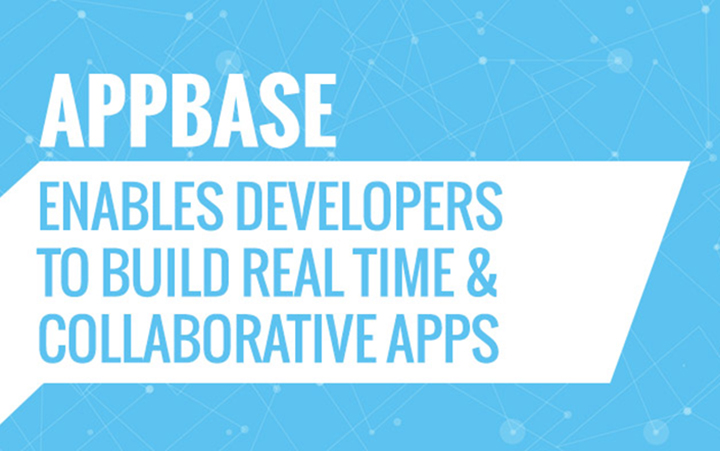I run an e-commerce business and am launching a mobile app. What is the No. 1 consideration I should not overlook? The following answers are provided by members of Young Entrepreneur Council (YEC), an invite-only organization comprised of the world’s most promising young entrepreneurs. In partnership with Citi, YEC recently launched BusinessCollective, a free virtual mentorship program that helps millions of entrepreneurs start and grow businesses. 1. Simplicity  Save yourself a ton of headaches by building a simple app. Since it needs to work perfectly across the nearly infinite variety of mobile devices available today, over-complicating your app will hurt you. Mobile users want something that works, that’s fast and that provides them with what they want. Save the bells and whistles for your website and make sure your app delivers the raw goods mobile users expect. – Nicolas Gremion, Free-eBooks.net 2. Incentives for Sharing and Mobile Purchases
Save yourself a ton of headaches by building a simple app. Since it needs to work perfectly across the nearly infinite variety of mobile devices available today, over-complicating your app will hurt you. Mobile users want something that works, that’s fast and that provides them with what they want. Save the bells and whistles for your website and make sure your app delivers the raw goods mobile users expect. – Nicolas Gremion, Free-eBooks.net 2. Incentives for Sharing and Mobile Purchases  Mobile apps are more difficult than the web to quickly engage customers. To overcome the additional friction of app downloads and installs, grease the viral potential with incentives for sharing and purchases. Turn your active consumers into marketing advocates. – Trevor Sumner, LocalVox 3. Desktop Versus Mobile Behaviors
Mobile apps are more difficult than the web to quickly engage customers. To overcome the additional friction of app downloads and installs, grease the viral potential with incentives for sharing and purchases. Turn your active consumers into marketing advocates. – Trevor Sumner, LocalVox 3. Desktop Versus Mobile Behaviors  Just because your customers are doing something on your e-commerce site on their desktop doesn’t mean that they want to do the exact same thing in your app on their mobile device. They might want to purchase different things, or maybe not even all on mobile. Make sure you understand your customer’s behaviors before you invest time and money into an app. – Brooke Bergman, Allied Business Network Inc. 4. Scalable infrastructure
Just because your customers are doing something on your e-commerce site on their desktop doesn’t mean that they want to do the exact same thing in your app on their mobile device. They might want to purchase different things, or maybe not even all on mobile. Make sure you understand your customer’s behaviors before you invest time and money into an app. – Brooke Bergman, Allied Business Network Inc. 4. Scalable infrastructure  The front-end is crucial, but it’s the back-end that makes the difference between a great user experience and frustration. eCommerce in particular needs scalable infrastructure because performance is so important. Scalable infrastructure allows eCommerce platforms to accommodate unexpected loads and avoid the sort of user experience degradation that leads to abandoned carts and reduced sales. – Vik Patel, Future Hosting 5. User Experience
The front-end is crucial, but it’s the back-end that makes the difference between a great user experience and frustration. eCommerce in particular needs scalable infrastructure because performance is so important. Scalable infrastructure allows eCommerce platforms to accommodate unexpected loads and avoid the sort of user experience degradation that leads to abandoned carts and reduced sales. – Vik Patel, Future Hosting 5. User Experience  The only thing constant in technology is change. It is important to keep the consumer in mind the entire time while making their experience with the app seamless. A great example of this is to have their info stored in the checkout stage. – Jayna Cooke, EVENTup 6. Search Function Capabilities
The only thing constant in technology is change. It is important to keep the consumer in mind the entire time while making their experience with the app seamless. A great example of this is to have their info stored in the checkout stage. – Jayna Cooke, EVENTup 6. Search Function Capabilities  Make sure your search function includes capabilities for searching by bar code or by image, as many mobile customers will prefer this over a text-based keyword search. – Andrew Schrage, Money Crashers Personal Finance 7. Optimization for Repeat Purchases
Make sure your search function includes capabilities for searching by bar code or by image, as many mobile customers will prefer this over a text-based keyword search. – Andrew Schrage, Money Crashers Personal Finance 7. Optimization for Repeat Purchases  Top-performing apps are effective in retaining customers and generating residual income. Give your customers a reason to return to your app to make more purchases: repeat their past orders, consider subscriptions or automatic reordering, offer discounts with purchases and other incentives designed to make them use the app on a regular basis. Make it easy for them to do what they want to do, and they will be back! – Andrew Kucheriavy, Intechnic 8. Whether It’s the Best Idea
Top-performing apps are effective in retaining customers and generating residual income. Give your customers a reason to return to your app to make more purchases: repeat their past orders, consider subscriptions or automatic reordering, offer discounts with purchases and other incentives designed to make them use the app on a regular basis. Make it easy for them to do what they want to do, and they will be back! – Andrew Kucheriavy, Intechnic 8. Whether It’s the Best Idea  Building and maintaining an app is a resource intensive commitment for the long term, and the battle for discovery in the app market is harder than earning organic traffic. Can the user experience and conversion rate only be enhanced by a mobile app, or can the same be achieved with a mobile-optimized site? Mobile browser capabilities are also now nearly identical to native apps! – Punit Shah, My Trio Rings 9. The Checkout Process
Building and maintaining an app is a resource intensive commitment for the long term, and the battle for discovery in the app market is harder than earning organic traffic. Can the user experience and conversion rate only be enhanced by a mobile app, or can the same be achieved with a mobile-optimized site? Mobile browser capabilities are also now nearly identical to native apps! – Punit Shah, My Trio Rings 9. The Checkout Process  This is the single most important item for your conversion funnel. The checkout process must be easy — three steps or fewer. Make sure you allow people to make purchases without creating accounts. – Ania Rodriguez, Key Lime Interactive.com 10. Analytics
This is the single most important item for your conversion funnel. The checkout process must be easy — three steps or fewer. Make sure you allow people to make purchases without creating accounts. – Ania Rodriguez, Key Lime Interactive.com 10. Analytics  Only a small percentage of apps have any form of App analytics platforms installed. Many retailers believe that the user flows within apps are the same as on a mobile site, but without analytics you’re playing a guessing game. Utilizing a suite of app analytics and testing tools is critical to a successful app launch while minimizing app abandonment rates. – Dan Golden, Be Found Online 11. User Feedback Options
Only a small percentage of apps have any form of App analytics platforms installed. Many retailers believe that the user flows within apps are the same as on a mobile site, but without analytics you’re playing a guessing game. Utilizing a suite of app analytics and testing tools is critical to a successful app launch while minimizing app abandonment rates. – Dan Golden, Be Found Online 11. User Feedback Options  A very simple, yet far too often overlooked, aspect of developing an app is taking your user feedback seriously. While you may feel a certain functionality is where it needs to be, the general public and your market may disagree. Enable feedback on your app, and ensure you spend plenty of time in the testing phase. You may even want to use a focus group depending on the size of your venture. – Mark Salamon, Gold Crest Care Center
A very simple, yet far too often overlooked, aspect of developing an app is taking your user feedback seriously. While you may feel a certain functionality is where it needs to be, the general public and your market may disagree. Enable feedback on your app, and ensure you spend plenty of time in the testing phase. You may even want to use a focus group depending on the size of your venture. – Mark Salamon, Gold Crest Care Center
11 Things to Consider When Launching a Mobile App
By Techli
27 julio, 2015









